Shlink
Shlink allows for passing of parameters to URLs using # for anchored links
Shlink does not allow you to rename a shortlink. :(
Overview
Shlink is a URL shortner that can be hosted locally or in a docker container. It feels very segmented in the sense that you can mix and match many solutions to different services required under certain Shlink instances. This could be beneficial if for example you had a preference to use a certain database or webserver due to some support or feature. To name a few -
Webservers: Apache, Nginx, and Swoole Databases: mysql, mariadb, postgres, Redis, and mssql
See the docker-compose.yml on the GitHub for a good collection of services and options for each that could be ran.
Shlink also comes apart nicely. Meaning if you want to host an nginx server / database on your host and then utilize the public app.shlink.io web client, you can do so and save yourself the trouble of updating / maintaining the web client yourself.
Shlink Webserver
wget https://github.com/shlinkio/shlink/releases/download/v2.2.1/shlink_2.2.1_dist.zip
unzip shlink_2.2.1_dist.zip
cd shlink_2.2.1_dist/
sudo chmod -R +w data/
PHP Parse error: syntax error, unexpected '$isUpdate' (T_VARIABLE), expecting ')' in /home/shlink/shlink_2.2.1_dist/vendor/shlinkio/shlink-installer/bin/run.php on line 12
So I grabbed the docker image instead -
After pointing nginx to port 8080, Shlink can be quickly spun up using a docker command. The only values needing changed below are SHORT_DOMAIN_HOST and SHORT_DOMAIN_SCHEMA, if you are not using https.
docker run --name shlink -p 8080:8080 -e SHORT_DOMAIN_HOST=domain.com -e SHORT_DOMAIN_SCHEMA=https -e GEOLITE_LICENSE_KEY=kjh23ljkbndskj345 shlinkio/shlink:stable
Once active, visiting your domain will result in a 404, since we are only running the nginx server for shlink to route links through we'll need to setup a connection to the remote database at app.shlink.io. This is done by first generating an API key from the commandline under the same user that manager the shlink docker service -
docker exec -it shlink_container shlink api-key:generate
This command will output a string of characters that we can input on app.shlink.io by filling out a quick form requesting us to name our server, provide the domain, and the secret API key.
Managing Shortlinks
Once this is done, you'll be greeted with the page below, allowing you to create shortlinks and edit or track links that already exist. This could be useful for changing links that are spread across a wider range of services, so you wouldn't need to go back and replace links to reroute to a new or updated location, you could simply update your shortlink within your shlink dashboard.
One thing that got old quickly is deleting shortlinks, where the prompt required you to enter the short-code into a prompt that covered the shortcode from view. I only had 3 to remove, and it took quite a bit of time for such a simple task. I did not see a bulk deletion option through the dashboard.
You have the option to set various parameters when creating a shortlink, and can always return to make edits to existing shortlinks that provide the same options -
Tracking Shortlinks
The dashboard provided further insight on links, creating some graphs using information like OS, location and browser -
There was even an option to omit results from the generated graphs using an interactive table provided within the dashboard. If you'll notice below, I've deselected the only android hit on the table and the data still appears as though there are still android users. I noticed that modifying the table would only impact the bar graphs.
Shlink CLI
Shlink offers a wide range of commands that can be run directly from the terminal that is hosting it. This can be used for any number of things from provisioning / revoking access via API key generation to creating and migrating databases. For a full list of commands, see below
I noticed from the statistics page above that the dashboard didn't seem to be reporting any information on location, though it seemed to support displaying this information. After looking through the commands above a bit, I attempted to see if I had any luck on the back end by running shlink visit:locate
Seems like there's an issue here, but at least its clear and easy to test for a fix. I'll come back to this if I have time.
Shortening a link through the CLI was interactive by default, but provided many additional options that could be useful for scripting or automation -


When attempting to track a shortlink via CLI, it basically feeds you the nginx logs of the relative hits to your shortlink. I noticed that when attempting to create a database that already exists, it exits cleanly and there is also a nice tool for updating your database
Shlink Web Client
The Shlink web client is on Docker Hub and instructions on how to use it can be found on the Shlink Documentation. To build the docker image manully -
wget https://github.com/shlinkio/shlink-web-client/archive/v2.3.1.zip
unzip v2.3.1.zip
cd shlink-web-client-2.3.1/
docker build . -t shlink-web-client
The docker-compose.yml looks like the following
version: '3'
services:
shlink_web_client_node:
container_name: shlink_web_client_node
image: node:12.14.1-alpine
command: /bin/sh -c "cd /home/shlink/www && npm install && npm run start"
volumes:
- ./:/home/shlink/www
ports:
- "3000:3000"
- "56745:56745"
- "5000:5000"

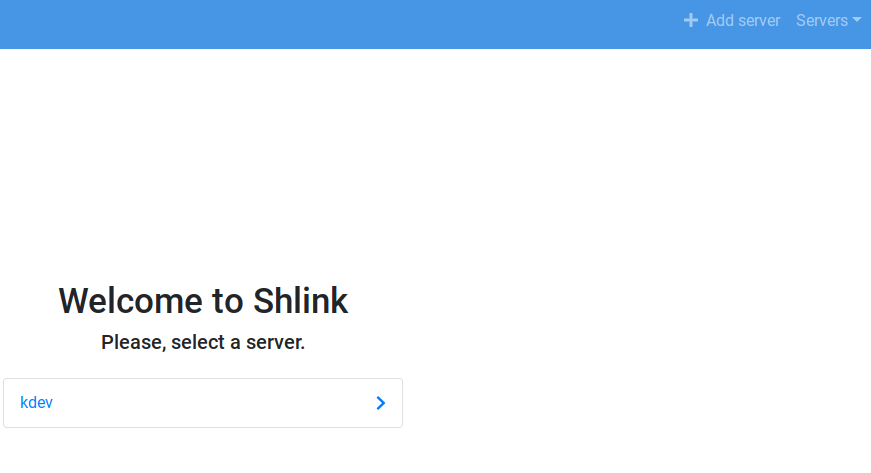

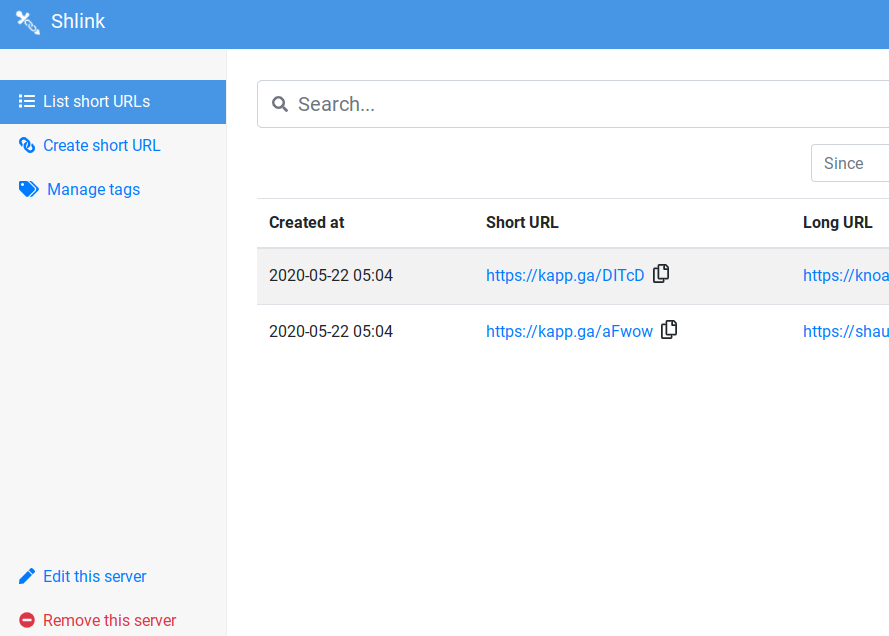
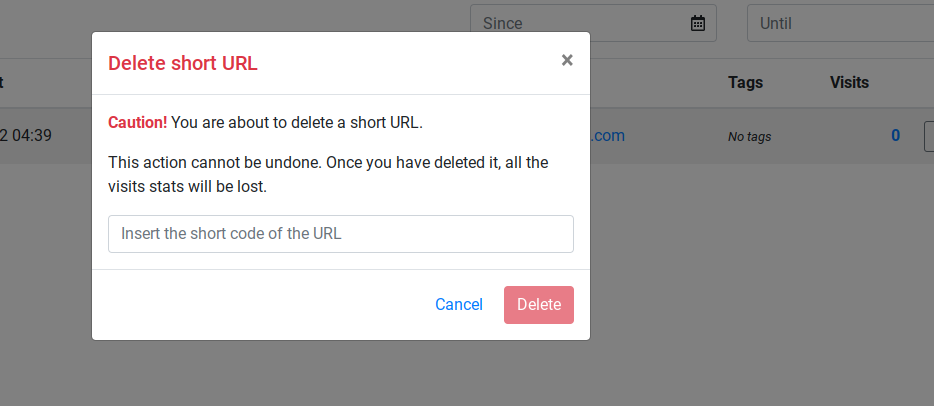
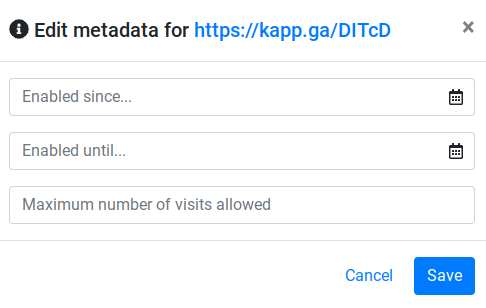
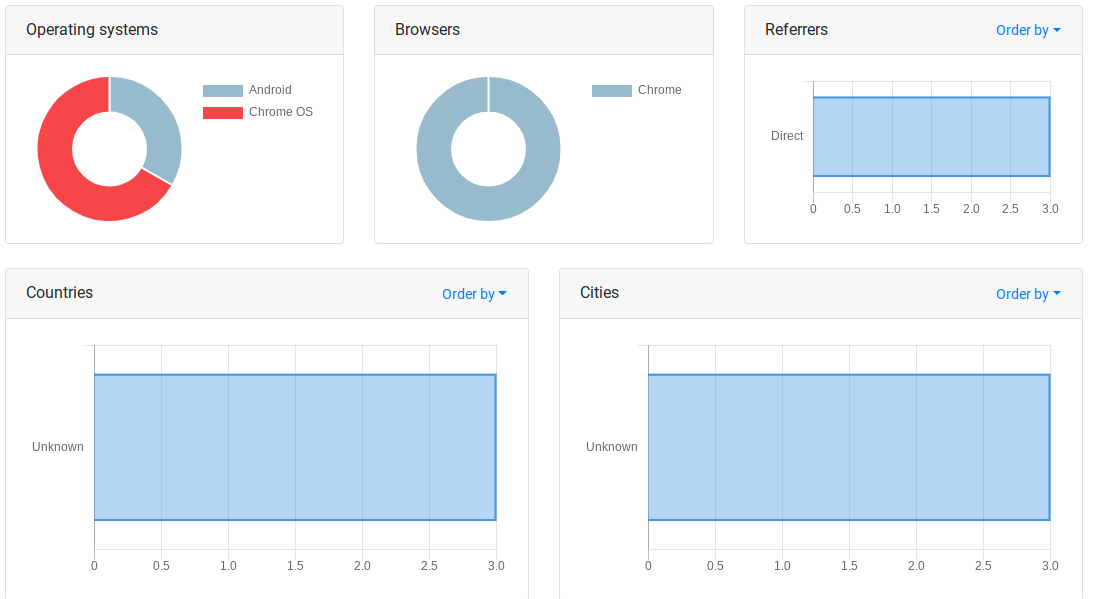
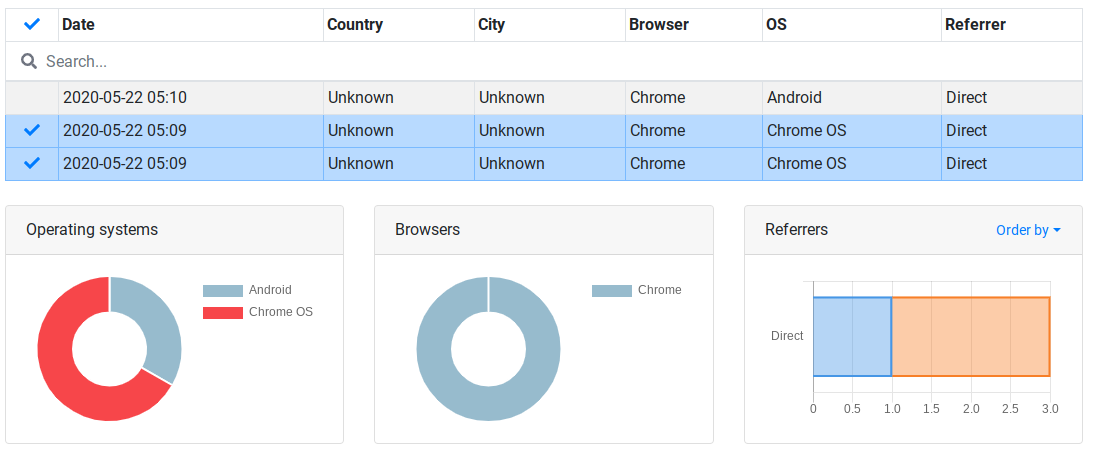
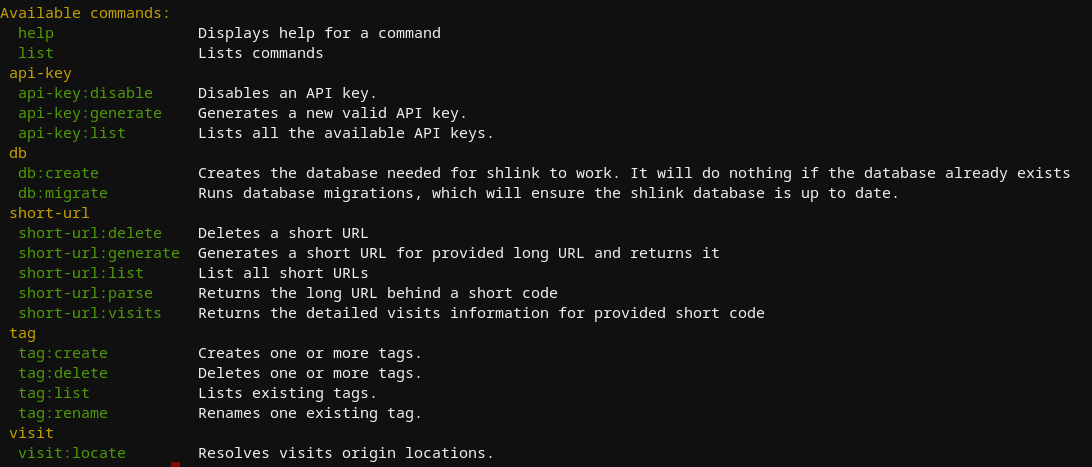


No Comments